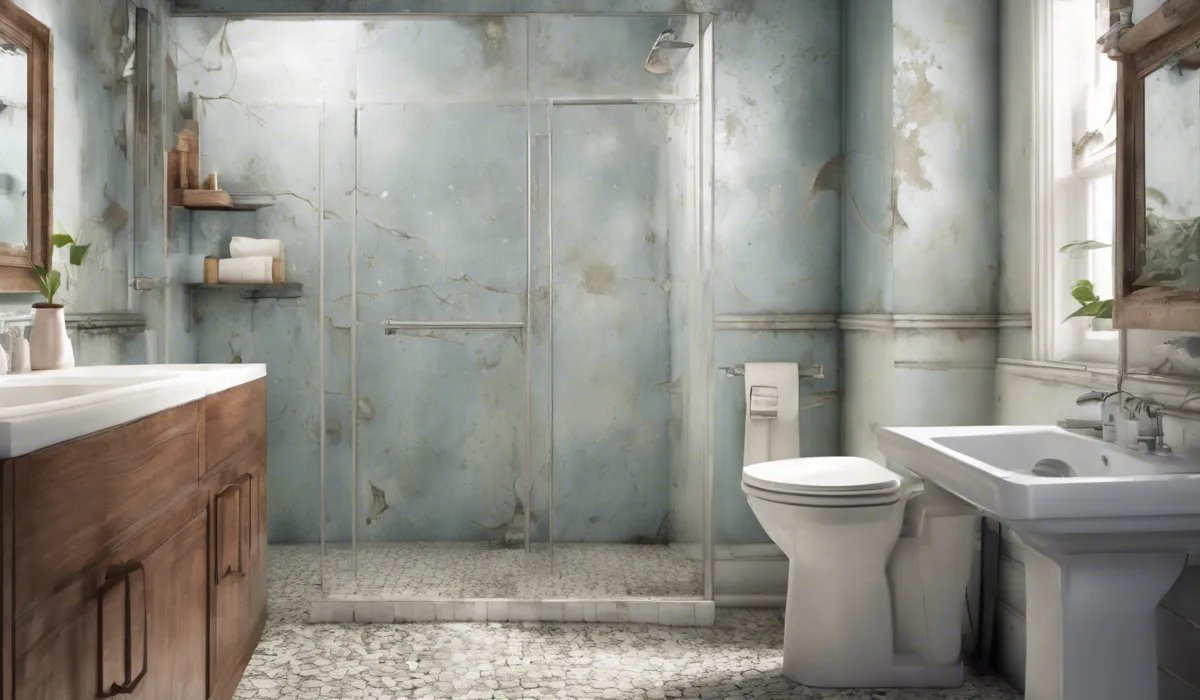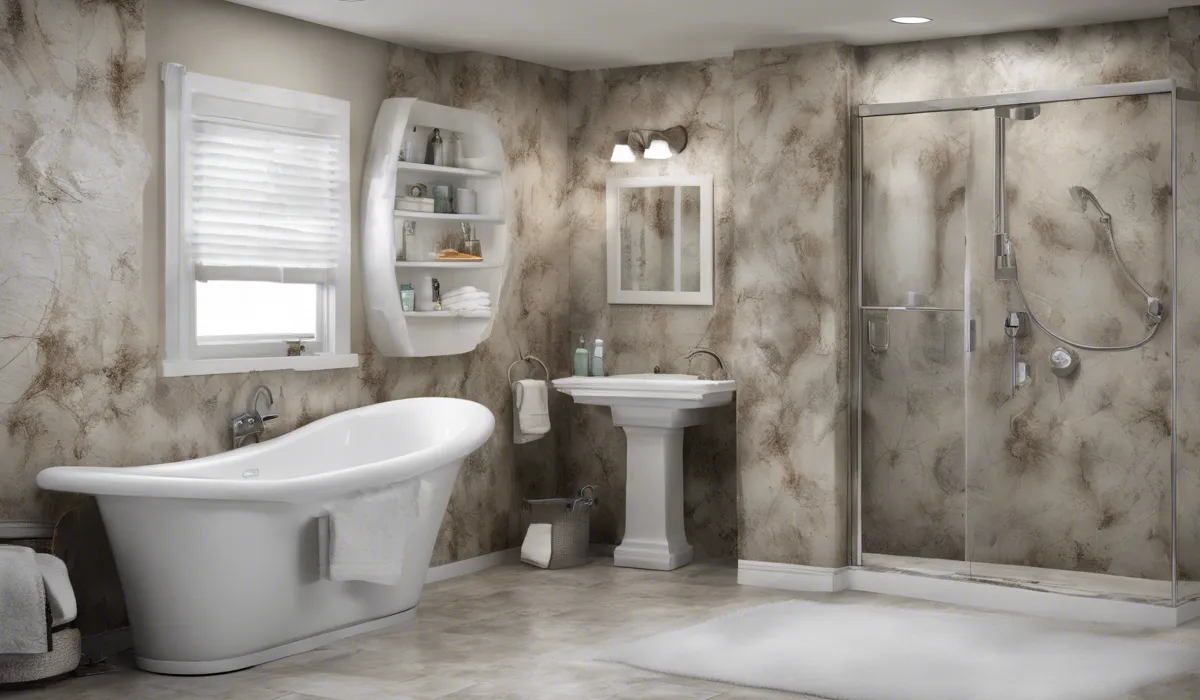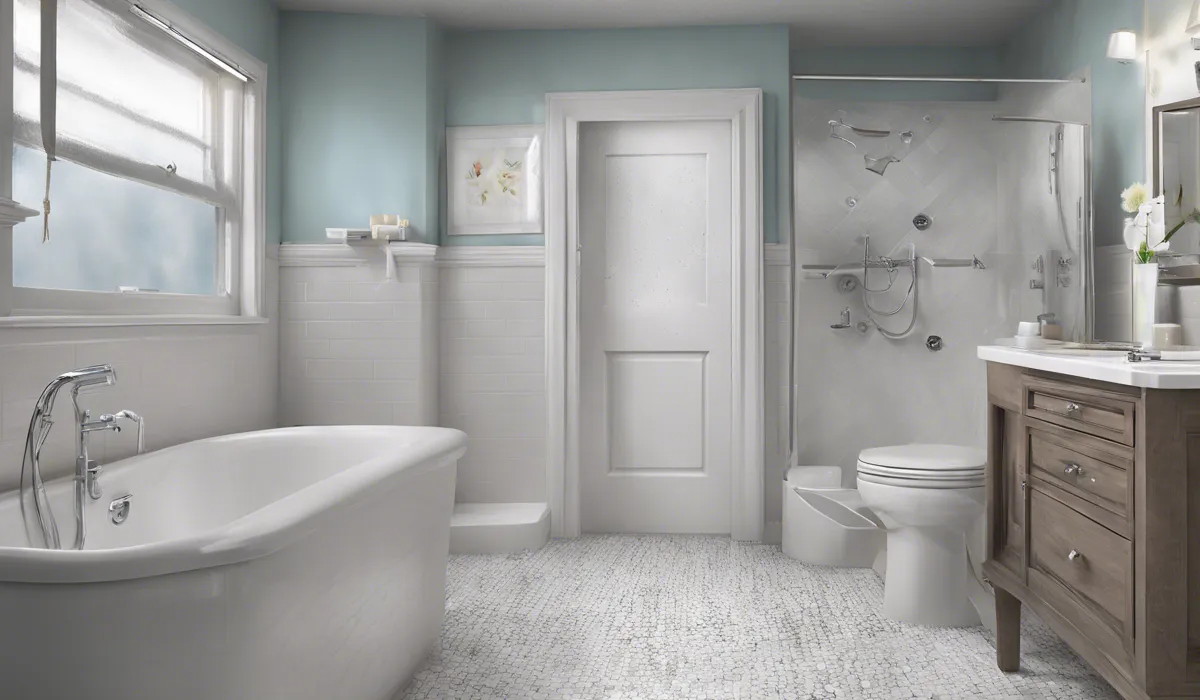To fix mold in the bathroom, start by ventilating the area. Use a mixture of bleach and water to scrub mold off surfaces. Seal any leaks and keep the bathroom dry to prevent future growth. Consider anti-mold paint for persistent problems.
Identifying the Presence of Mold

Signs of Mold Growth in the Bathroom
Spotting mold in your bathroom begins with knowing what to look for. Mold often appears as a fuzzy or slimy patch that may present in various colors like black, green, or white.
A musty, earthy smell is also a telling sign of hidden mold. Pay close attention to discolored grout lines, peeling wallpaper, or warping walls as these are common indicators of a mold issue.
Common Areas Where Mold Appears
Mold loves moisture and warmth, making bathrooms a perfect breeding ground. It often takes hold in corners, on ceilings, around the bathtub or shower, under sinks, and on window sills.
It’s wise to inspect these areas regularly, especially if they are not often exposed to light or air circulation.
Types of Mold Commonly Found in Bathrooms
The bathroom can host a variety of mold types. Black mold, scientifically known as Stachybotrys, is one of the most notorious and harmful varieties.
However, other common types include Cladosporium, Penicillium, and Aspergillus. Each type of mold has its characteristics and risks, and identifying the specific kind can be crucial for effective removal.
Health Implications of Bathroom Mold
Mold in the bathroom is not just unpleasant to look at; it poses health risks too. It can trigger allergic reactions, asthma attacks, and other respiratory issues.
Some people may experience skin irritation, watery eyes, or a runny nose. Long-term exposure to certain molds can lead to more severe health problems, particularly for those with weakened immune systems.
Preventative Measures to Control Mold Growth

Importance of Proper Ventilation
Keeping air moving is key to mold prevention. Use an exhaust fan during and after showers to help remove moisture-laden air.
If you don’t have a fan, crack a window open to let fresh air circulate. Regular airflow can significantly reduce the humidity levels that mold spores need to grow.
Regular Cleaning Practices to Inhibit Mold
Cleaning your bathroom weekly is a powerful mold deterrent. Pay special attention to tiles, shower curtains, and any other damp areas.
Use mold-killing products and remember to dry surfaces after use. This routine not only cleans existing mold spores but also prevents new growth.
Humidity Control Methods
Managing humidity levels is essential.
A dehumidifier can be effective in reducing the overall moisture in the air. Keeping humidity levels below 50% will make the environment less hospitable for mold. Simple acts like keeping the bathroom door open can also aid in controlling humidity.
Selection of Mold-Resistant Materials and Paints
When renovating or updating your bathroom, choosing mold-resistant materials can save a lot of trouble.
Opt for paints with mold inhibitors, and consider installing tiles and grout designed to resist mold growth.
These materials may cost more upfront but can be more cost-effective in the long run by reducing mold-related issues.
Step-by-Step Guide to Removing Bathroom Mold

Safety Precautions Before Mold Removal
Before tackling mold, protect yourself. Wear gloves, a mask, and eye protection to avoid direct contact with mold spores.
Ensure the room is well-ventilated, and consider turning off the HVAC system to prevent spreading spores to other parts of your home.
Necessary Tools and Cleaning Solutions
To effectively remove mold, you’ll need the right tools. Gather a scrub brush, sponge, bucket, and a cleaning solution, such as a mixture of one part bleach to ten parts water.
For natural options, vinegar or hydrogen peroxide can be effective, though they may take longer to work than bleach.
Detailed Cleaning Process for Different Surfaces
For non-porous surfaces like tiles, apply the cleaning solution and scrub vigorously to remove the mold.
Grout, being porous, may require a specialized cleaner and a stiffer brush. After cleaning, thoroughly rinse the area with water to remove any residual cleaner and dry it completely.
Tips for Ensuring Complete Mold Removal
Be thorough in your cleaning to ensure all mold spores are eradicated. This may involve repeated applications of the cleaning solution and scrubbing.
Pay attention to hidden areas and consider using a disinfectant to kill any lingering spores. Always dry the cleaned areas well as leftover moisture could foster new mold growth.
When to Call Professional Mold Remediation Services?
If you’re dealing with extensive mold, or if it keeps coming back despite your best efforts, it’s time to call in the professionals.
Mold remediation services have the tools and expertise to tackle severe mold problems, ensuring your bathroom is safe and mold-free.
FAQs About Fixing Mold in Bathroom
How do you start the process of removing mold from the bathroom?
Begin by ventilating the area to reduce moisture. Open windows or use an exhaust fan before starting the cleaning process.
What is an effective cleaning solution for bathroom mold?
A mixture of bleach and water, typically one part bleach to ten parts water, is effective for scrubbing mold off bathroom surfaces.
How can you prevent mold from returning in the bathroom?
Seal any leaks to prevent moisture buildup and keep the bathroom dry. Use a dehumidifier or maintain good ventilation to deter future mold growth.
What should you do if mold persists in the bathroom despite cleaning?
For persistent problems, consider applying anti-mold paint to affected areas after thoroughly cleaning and drying them.
Is there a way to reduce humidity in the bathroom to prevent mold?
Yes, using an exhaust fan during and after showers, fixing leaks, and potentially using a dehumidifier can significantly reduce humidity and prevent mold growth.
Final Thoughts
To remediate bathroom mold, begin by ensuring proper ventilation. Tackle existing mold with a bleach-water solution.
Address any leaks to halt further moisture buildup and maintain a dry environment to deter mold recurrence. For areas with chronic mold issues, applying anti-mold paint may provide a long-term solution.
